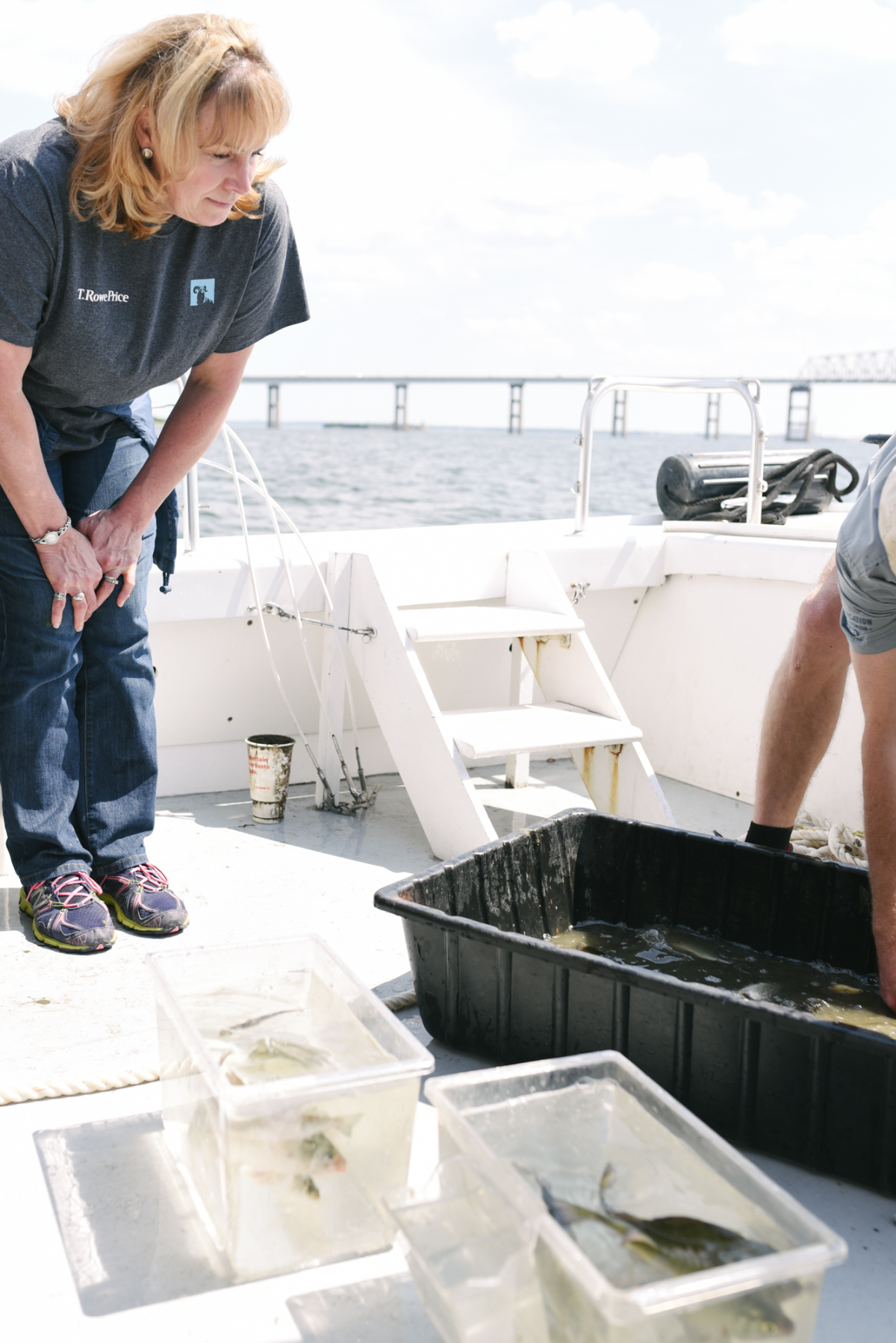T. Rowe Price Associates Raise Oysters in Baltimore to Improve Harbor Health
August 14, 2017 /3BL Media/ - Over a span of nine months, nearly 30 T. Rowe Price associates maintained 20 cages full of thousands of baby oysters to safeguard their survival.
Since 2013, T. Rowe Price has joined neighboring companies to participate in The Great Baltimore Oyster Partnership in an effort to improve the water quality and increase the local oyster population.
“We are focused on oysters because they are an essential ingredient in filtering harmful pollution, and very few oysters remain due to pollution and over-harvesting,” says Kevin Shea, a senior manager in T. Rowe Price’s Corporate Social Responsibility (CSR) department. “A fully grown oyster filters up to 50 gallons of water per day.”
Baltimore’s oyster population isn’t the only one benefitting from this effort. After taking part in this program for the past five years, T. Rowe Price associates have become more knowledgeable about how their own actions may affect the Harbor’s ecosystem over the long term. There are also many people who pass by and ask questions—and through associates’ knowledge of what it takes to maintain the oyster population, they can help raise awareness among others.
In the autumn, baby oysters—called “spat”—begin to grow on the recycled shells of adult oysters and those shells are put into cages. The cages, each carrying thousands of spat, went into one of the Oyster Gardens in the Inner Harbor and were hung close to the surface so they could receive enough sunlight, oxygen, and water flow.
There are seven gardens throughout Baltimore’s Inner Harbor and each garden has 20 cages. Volunteers clean the cages and remove excess algae and sediment to make sure that the spat receive the proper amount of food, sunlight, and oxygen—a process that assists in the oysters’ development.
During winter months, when it’s colder, associates only tend to the oyster gardens once a month—sometimes less. This is because oysters cannot live in freezing air and wind temperatures. During warmer months, associates help out every two weeks due to the immense algae growth at that time.
Usually by May or June, the oysters are ready for their release. They are taken to a sanctuary in Fort Carroll, Maryland where they are monitored by the Coast Guard to ensure their safety. Since the program launched in 2013, volunteers have helped raise over 270,000 oysters. For the 2017 oyster gardening year, T. Rowe Price associates helped raise over 19,000.
In the 19th century, the oyster population was large enough to filter the entire Chesapeake Bay every three days. Now, with the enormous decrease in population due to over-harvesting and habitat loss, it takes them over a year. The recent Healthy Harbor Report Card, unfortunately, continued to give Baltimore’s Inner Harbor a disappointing grade of F.
“Creating a healthy Inner Harbor will continue to be an uphill battle,” says Shannon Cuffley, who serves as the captain of T. Rowe Price’s oyster gardening efforts. “In the wild, the oyster success rate is only 1%. Within this program, the success rate is 70-80%.”
Although the oyster population may never be fully restored, the Waterfront Partnership, with support from corporate partners like T. Rowe Price, has the goal to make the Inner Harbor both swimmable and fishable again.






